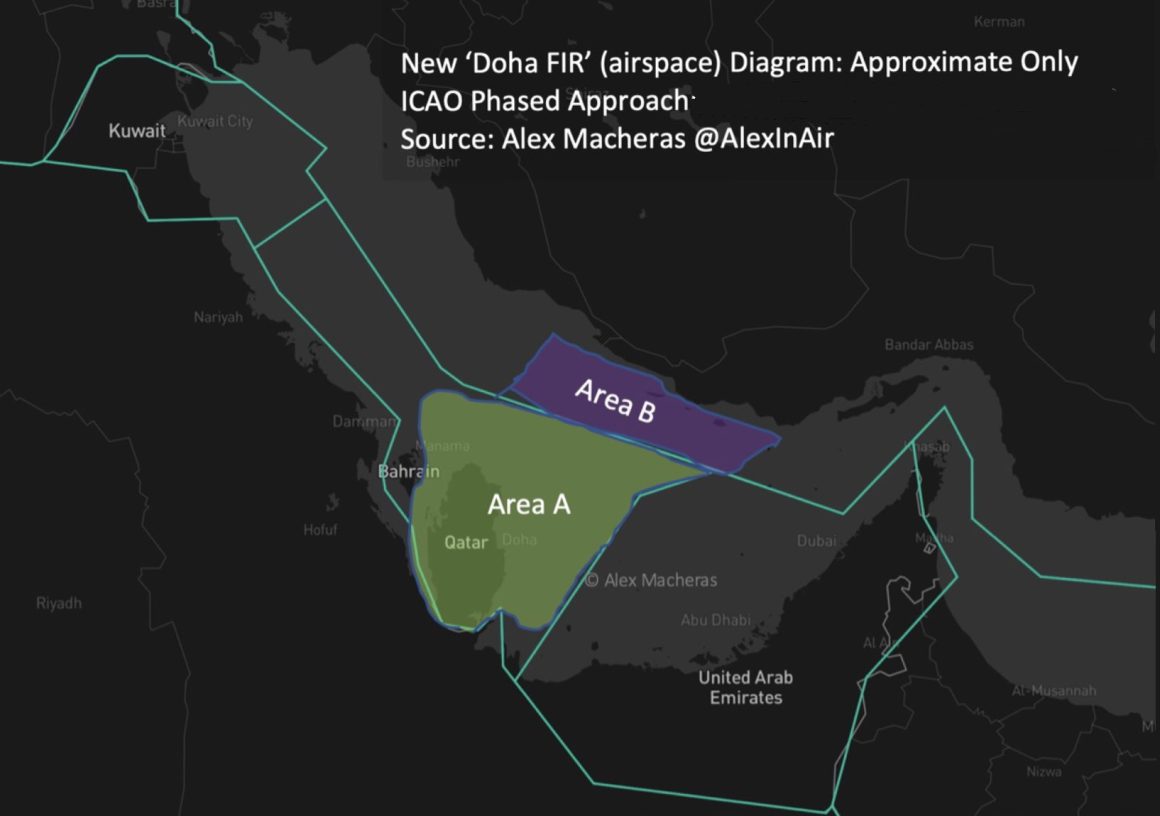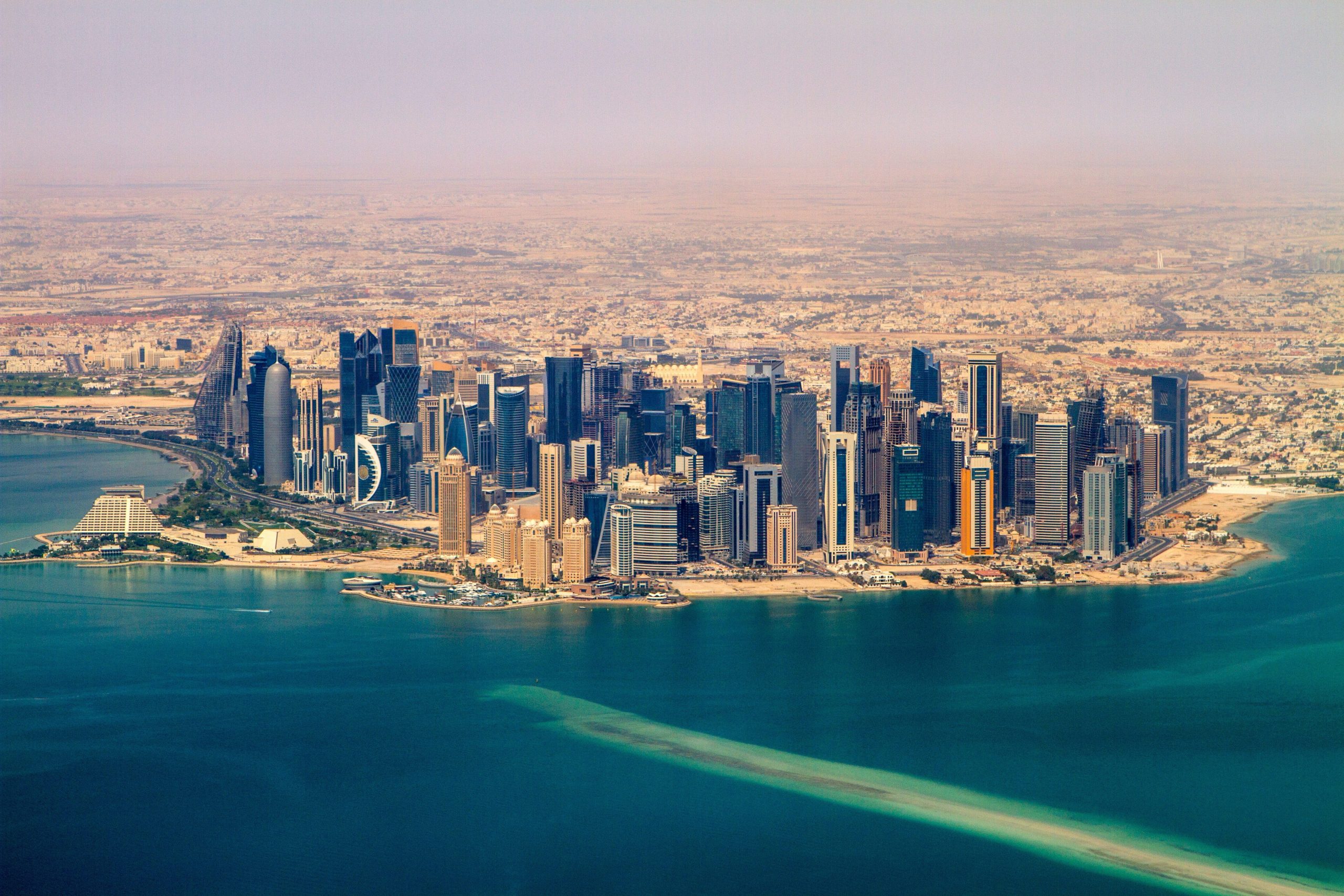For the first time in modern history, a country without its own airspace (FIR) has been included to the world’s airspace map.
Qatar’s first ever airspace has been established in full following the successful conclusion of the second stage of the International Civil Aviation Organisation’s (ICAO) plan, on Wednesday.
In a historic verdict for aviation in the Middle East, the United Nations special agency for aviation ICAO agreed last year to establish a brand new, first-ever airspace for Qatar known as the “Doha FIR” — redrawing the skies of the world’s airspace map for the first time in decades.
The ICAO is the UN agency with the jurisdiction to delegate which country is responsible for the operational control of a specific ‘flight information region’, which is known in the industry as a ‘FIR’ – effectively, an airspace area on the map of the skies, aviation analyst Alex Macheras penned for Doha News last year.
The airspace was set to be carried out in two phases.

In the diagram, Qatar would have sovereignty over “Area A” which is the ‘unlimited altitude’ portion of the Doha FIR that became effective last year. Up to 24,500 feet in the air, “Area B” would be under Qatari control, however, in two years, Area B would join Area A in becoming an area with an infinite ceiling, forming the final contour of Qatar’s airspace, Macheras detailed.
After the transition to the new airspace, Qatar is now the “responsible authority” for the entire field of (FIR), which combines Area A and Area B into one sizable airspace area under its control from the ground up to an unrestricted altitude, including over international waters.
What does this mean for the region’s airspace?
The Doha FIR reduces Bahrain’s existing airspace, extending it north into Iran and east toward the United Arab Emirates.
Members of the ICAO council, including the United States, South Africa, Singapore, Greece, and Saudi Arabia accepted the Doha FIR, as penned by Macheras to last year.
For the first time in modern history, a country without its own airspace (FIR) has been included to the world’s airspace map. This is a significant development for Qatar, the analyst explained.
With a new FIR of its own, Qatar has acquired much-needed airspace independence and will be better able to meet its goals for sustainable air travel by maximising the efficiency of it around Qatar, he added.
The Gulf nation will also profit from overflight fees—a standard practice in aviation—that other airlines will have to pay to use its airspace.
The decision follows ICAO’s conclusion in June 2021 when it “agreed on a Doha FIR in principle.” Since the last hearing, the organisation has been collaborating with aviation industry stakeholders to define the precise specifications of a Doha FIR.
The skies over the Middle East have been unevenly split for years. While airspace is distributed evenly across nations in the majority of the regions worldwide, the Gulf region’s airspace has lead an odd form, Macheras wrote.
Bahrain, the smallest of all Gulf states, has held control of most of the airspace above the Gulf with its ‘Bahrain FIR’ that stretches from Kuwait, across the Gulf, to the bordering FIR of the UAE.
Airspace in the region had previously been determined based on where military radars had been installed, and with a history of ‘brotherly’ relations between Qatar and Bahrain, (and both being Gulf Council Corporation countries as well as members of ICAO’s Transit Agreement, which permits freedom of the skies), Qatar had agreed for Bahrain to continue to control and manage its disproportionally large area of airspace, he wrote.
It was also stated at the time that Bahrain would continue to benefit from overflight fees, which airlines must pay in order to fly across a nation’s airspace and which are associated with one of the busiest transit zones on earth.
The GCC blockade’s after-effects
The unusual allocation of airspace in the Gulf came to light for the first time in 2017, when Qatar was cut off from the rest of the region as Saudi Arabia, the UAE, Bahrain and Egypt imposed an illegal air, land and sea blockade on the country.
The announcement of Bahrain’s airspace closure had been the most important for Qatar, although the rest of the countries had also joined Bahrain in announcing the immediate closure of their airspaces to all Qatari registered aircraft.
This was later found to be a violation of the ICAO’s Chicago Convention.
Qatar turned its formal petition to the ICAO for the establishment of its airspace in what would later be known as the Doha FIR in 2018, after recognising the risk of having skies controlled by another nation.







